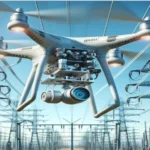The evolution of drone technology has brought about significant advancements in the way we approach various industries, from agriculture to defense. Among these innovations, solar UAVs (Unmanned Aerial Vehicles), commonly known as solar-powered drones, are revolutionizing aerial operations. By harnessing the power of the sun, these drones offer enhanced endurance, eco-friendliness, and a vision for a more sustainable future.
What Are Solar UAVs?
Solar UAVs are drones equipped with solar panels that convert sunlight into electricity, which is then used to power their systems and engines. Unlike traditional drones, which rely on batteries or fuel, solar-powered drones can operate for extended periods, even days or weeks, depending on the design and conditions.
These drones are typically equipped with lightweight and high-efficiency solar cells that optimize energy absorption. This makes them ideal for applications requiring long-term aerial monitoring or operations in remote areas.
The Technology Behind Solar UAVs
The operation of solar UAVs depends on advanced technologies that maximize their efficiency. Key components include:
- Solar Panels: High-efficiency photovoltaic cells mounted on the UAV’s wings capture sunlight and convert it into electricity.
- Energy Storage Systems: Batteries store excess solar energy for use during nighttime or cloudy weather.
- Lightweight Materials: The drones are constructed using lightweight composite materials to minimize energy consumption while maximizing flight time.
- Autonomous Navigation: Many solar UAVs are equipped with AI-powered systems to enable precise navigation and adaptive flight paths.
Advantages of Solar UAVs
- Extended Flight Time
Solar-powered drones can stay airborne for days, weeks, or even months, depending on the design. For instance, some prototypes are being developed to function as pseudo-satellites, operating at high altitudes for years without landing. - Eco-Friendly Operation
By utilizing renewable solar energy, these UAVs significantly reduce their carbon footprint. This makes them ideal for environmentally conscious operations, such as wildlife monitoring or disaster management. - Cost-Effectiveness
Once operational, solar UAVs require minimal maintenance and fuel costs, making them a cost-effective option for long-term projects. - Remote Area Access
Solar UAVs can operate in remote regions where traditional drones or aircraft might face logistical challenges due to limited fuel availability. - Versatility
They are suitable for a wide range of applications, including scientific research, communication, surveillance, and environmental monitoring.
Applications of Solar UAVs
The versatility of solar UAVs makes them valuable across numerous industries. Some notable applications include:
- Environmental Monitoring
Solar UAVs are used for tracking climate changes, monitoring deforestation, and observing wildlife populations without disturbing ecosystems. - Disaster Management
During natural disasters, such as floods or wildfires, these drones can provide real-time aerial imagery and assist in search-and-rescue operations. - Defense and Surveillance
Solar UAVs are increasingly deployed in military operations for border surveillance and intelligence gathering, thanks to their ability to operate continuously for extended periods. - Agriculture
In precision farming, solar UAVs monitor crop health, irrigation systems, and pest infestations efficiently and sustainably. - Telecommunications
By acting as aerial communication towers, solar UAVs can provide internet and mobile connectivity to remote or disaster-affected areas.
Challenges Facing Solar UAVs
While solar UAVs offer incredible potential, there are challenges that need to be addressed:
- Dependence on Weather Conditions
Cloudy weather or prolonged periods without sunlight can limit the effectiveness of solar UAVs, making energy storage systems crucial. - High Development Costs
Designing and manufacturing solar UAVs require significant investment in advanced materials and technologies. - Regulatory Barriers
As with other drone technologies, the use of solar UAVs is subject to strict regulations, particularly in shared airspace.
The Future of Solar UAVs
The future of solar UAVs looks promising, with ongoing advancements in solar panel efficiency, energy storage, and AI-powered systems. In the coming years, we can expect to see these drones playing an even more prominent role in industries such as global communications, environmental conservation, and disaster response.
Moreover, organizations like NASA and private companies are exploring the potential of solar UAVs as low-cost alternatives to satellites. This could enable more accessible and affordable global connectivity, particularly in underserved regions.
Conclusion
Solar UAVs represent a revolutionary step forward in drone technology. By harnessing the power of the sun, these drones offer unparalleled benefits, including extended flight times, eco-friendliness, and versatility. Although challenges remain, advancements in technology are paving the way for their widespread adoption across industries.
From transforming the way we monitor the environment to enhancing global connectivity, solar UAVs are setting the stage for a more sustainable and innovative future. As technology continues to evolve, their potential applications will only expand, redefining the boundaries of what drones can achieve.




